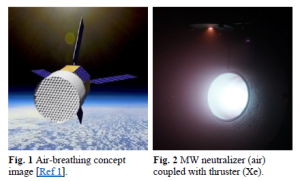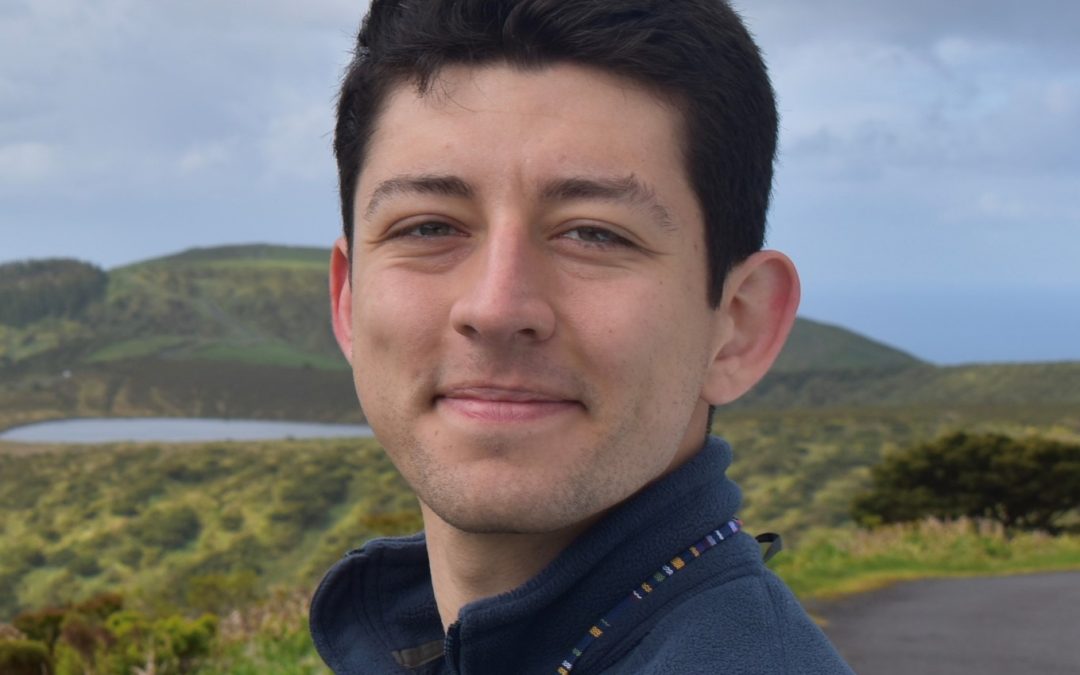

Abstract
The air-breathing electric propulsion (ABEP) concept refers to a spacecraft in very low Earth orbit (VLEO) which uses upper atmosphere air as propellant for an electric thruster (Fig. 1). The thrust produced compensates the drag which typically causes rapid re-entry at VLEO orbital altitudes, in the approximate range of 150-300km. Such a propulsion system removes the need for on-board propellant storage and the limit this typically places on mission lifetime, allowing a new class of sustainable spacecraft that do not pose a risk to increasing space debris.
This talk will cover both aspects of the PhD research: a) a computational analysis into the feasibility of an ABEP spacecraft, and b) the experimental development of a method for neutralising the ion beam of an air-breathing thruster. The feasibility analysis presents a first-order spacecraft design tool and demonstrates a thruster control law that achieves a stable, long-term altitude range. For instance, a spacecraft with 200kg mass and thruster performance of Isp = 5455s and T/P = 23mN/kW is shown to maintain a stable altitude envelope of 160-183km in a frozen Sun-synchronous orbit, simulated over two years of varying atmospheric conditions [Ref 2].
The development of an air-breathing neutraliser is done as part of the EU H2020 ‘AETHER’ research project [Ref 1], which aims to design a feasible ABEP system capable of being tested in a VLEO-representative environment. The function of the neutraliser is to produce an electron current and for this the design is based on a microwave-powered plasma cathode approach [Ref 3]. In the concept of operation, air molecules are fed into the prototype, ionised by means of a directly-inserted microwave antenna and an electron-dense plasma is extracted via a positive potential gradient. Standalone testing has focused on iterative development of the neutralizer prototype, incorporating studies into the effect of magnetic field strength & topology and degradation of plasma-interfacing materials [Ref 4]. An extracted current of 0.7A has been demonstrated at an air mass flow rate of 0.1mg/s, cathode bias of -100V and source microwave power of 90W, which represents a power cost of approximately 180W/A. Coupled testing with a Cylindrical Hall-type thruster has shown similar performance to a conventional hollow cathode for the neutralizer and thruster both operating on Xenon, with the neutralizer supporting an anode current up to 1.2A and demonstrating a minimum power cost of around 80W/A. Operation of the neutralizer on air and thruster on Xenon has been verified, as shown in Fig. 2, with fully air-breathing operation currently being pursued, prior to plasma diagnostic studies to investigate the effect of the microwave neutralizer on the thruster discharge.
Bio
Mansur is a third-year PhD student within the Plasma Propulsion Group at the University of Surrey, supervised by Dr Andrea Lucca Fabris. During the PhD, his teaching activities have incorporated supervision of five Masters projects, including at Imperial College London. In 2019, he graduated with a First-class Masters in Aerospace Engineering from the University of Bristol, finishing top of the year and winning three academic prizes. His thesis subject was CubeSat attitude control. In 2018, he completed an internship with the European Space Agency, based at ESAC in Madrid. Away from work, Mansur enjoys playing tennis, medieval history and anything related to football.
Date/Time:
Date(s) - Nov 15, 2022
2:00 pm - 3:00 pm
Location:
38-138 Engineering IV
420 Westwood Plaza Los Angeles CA 90095

